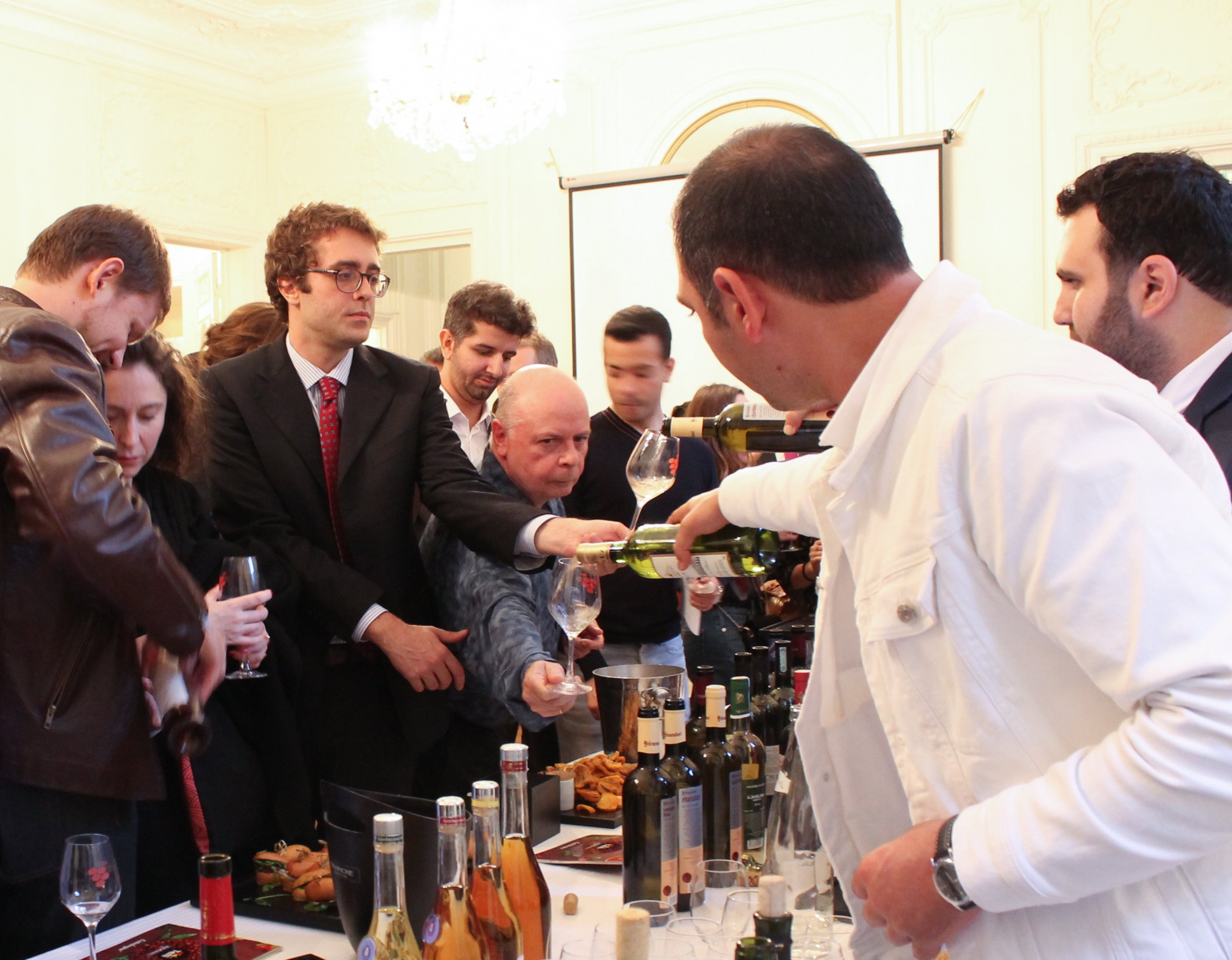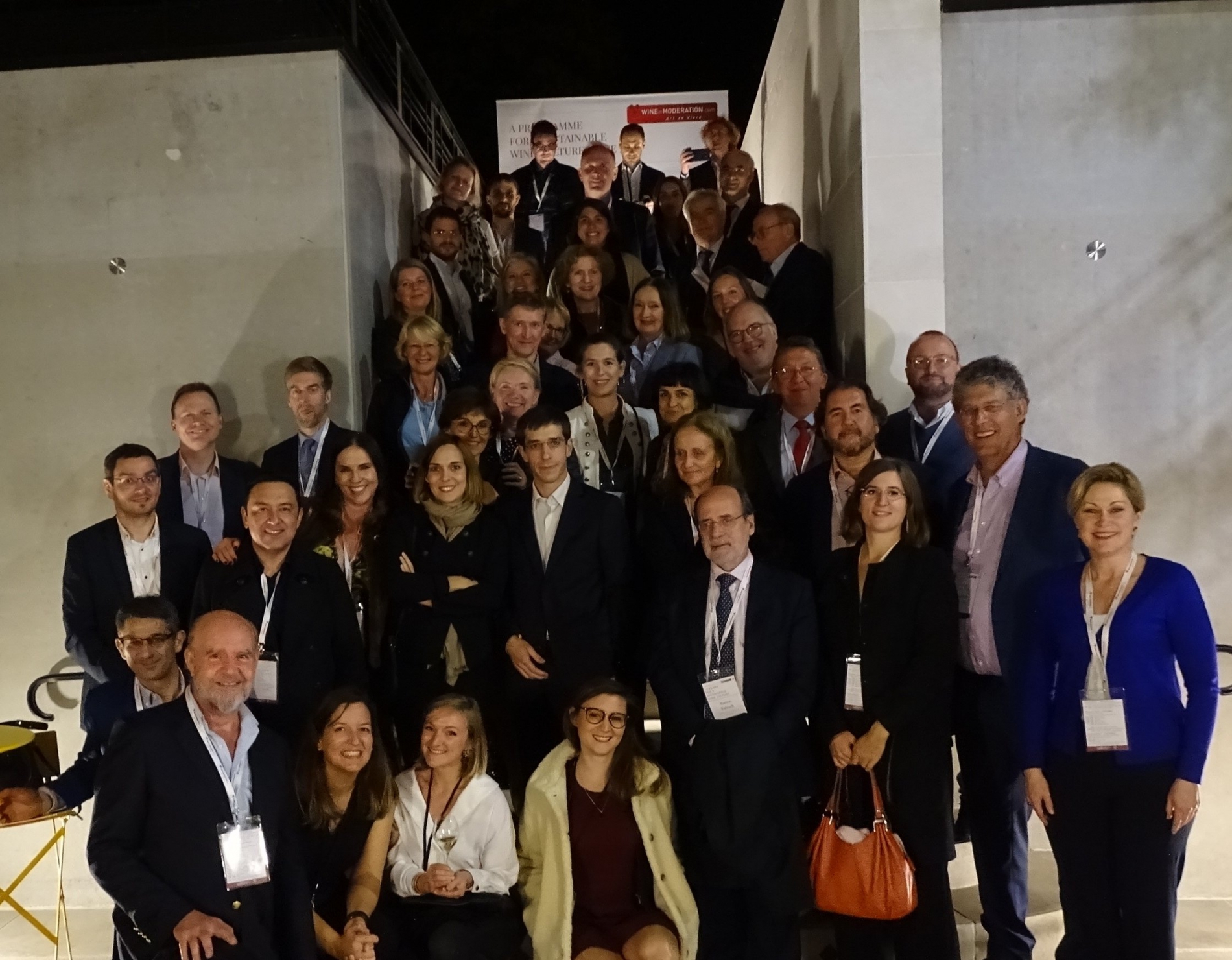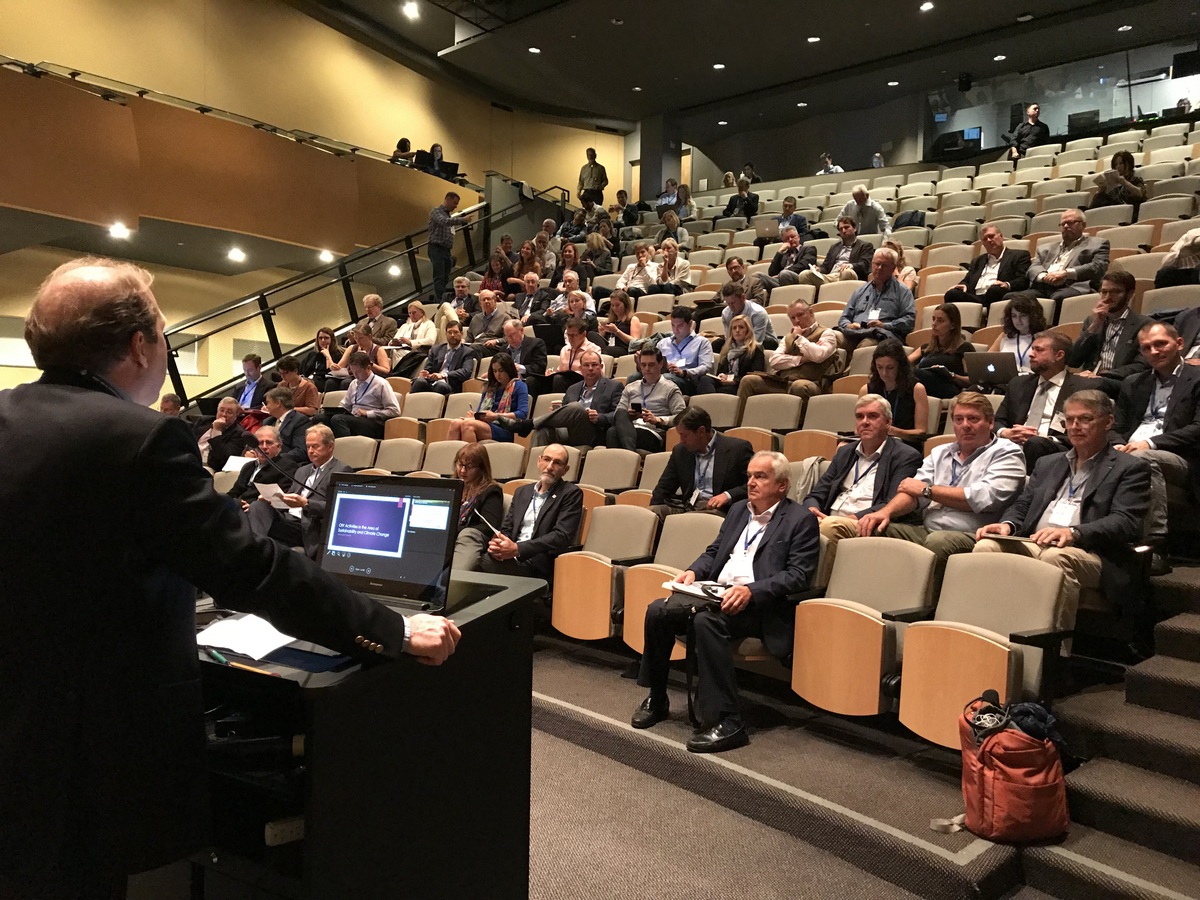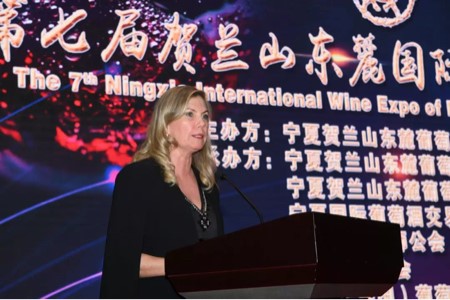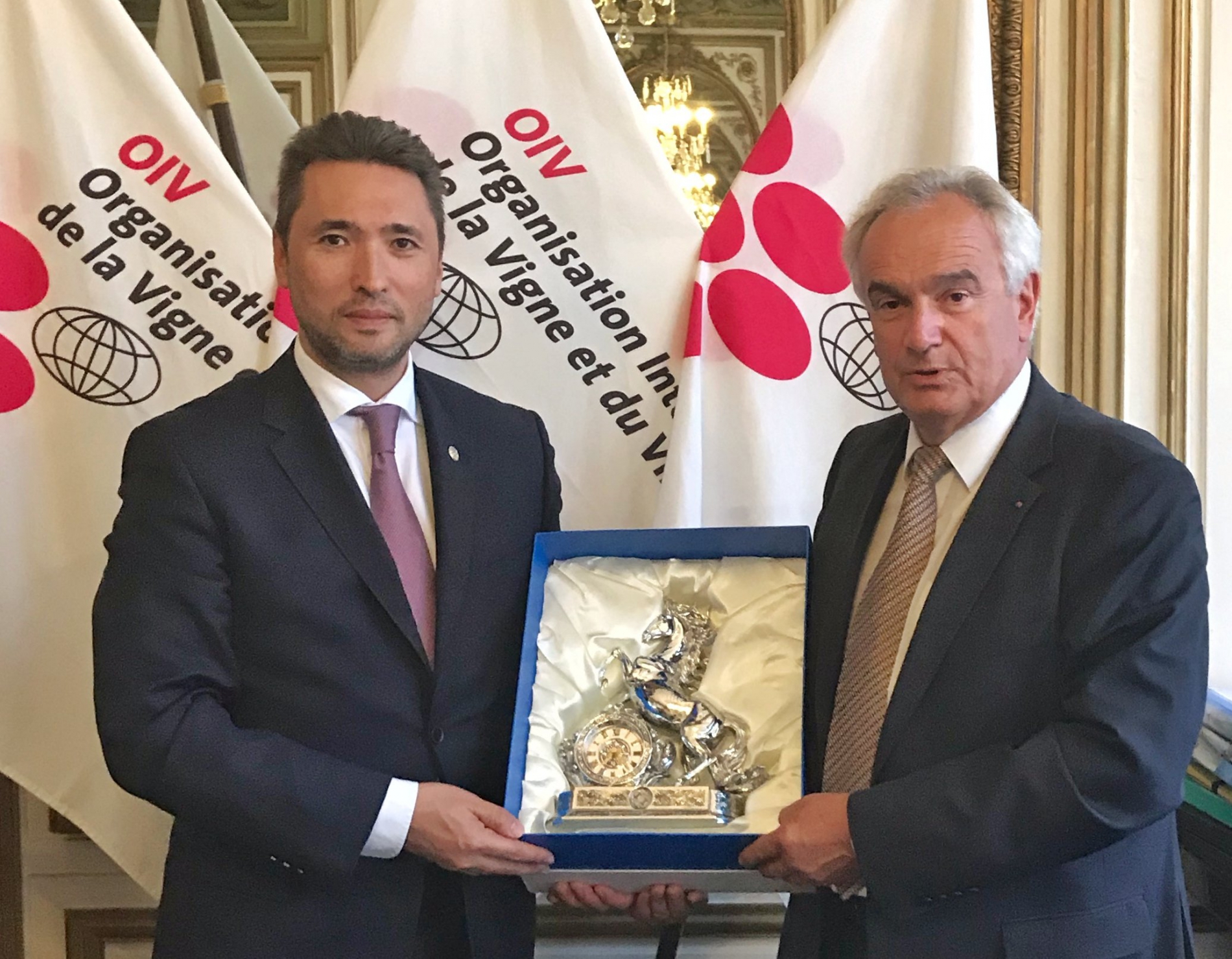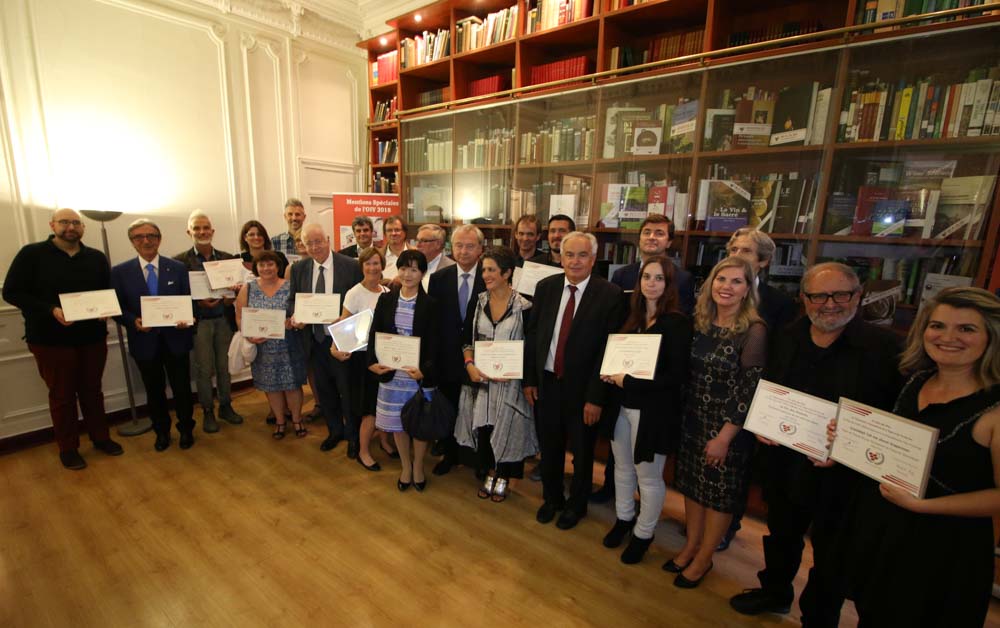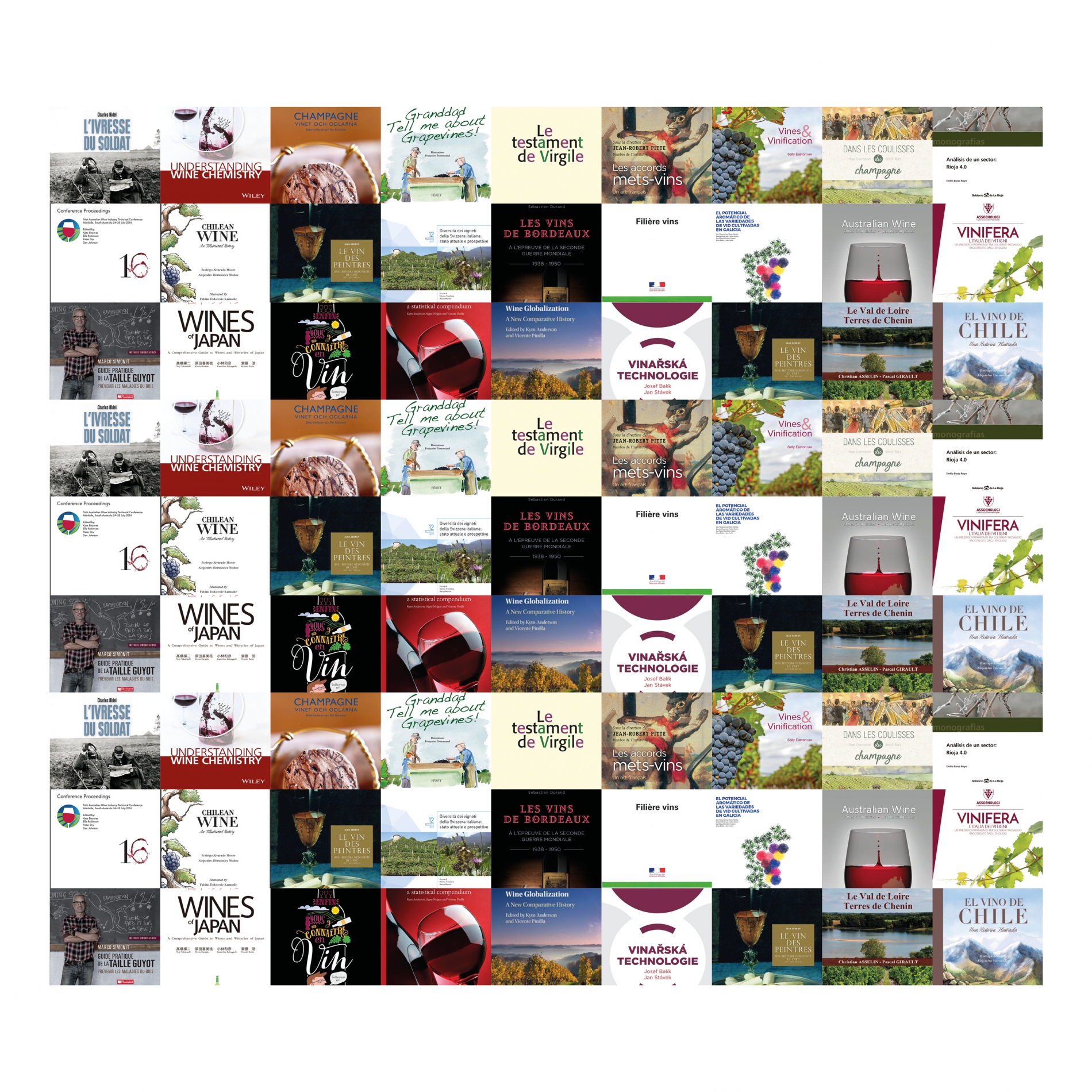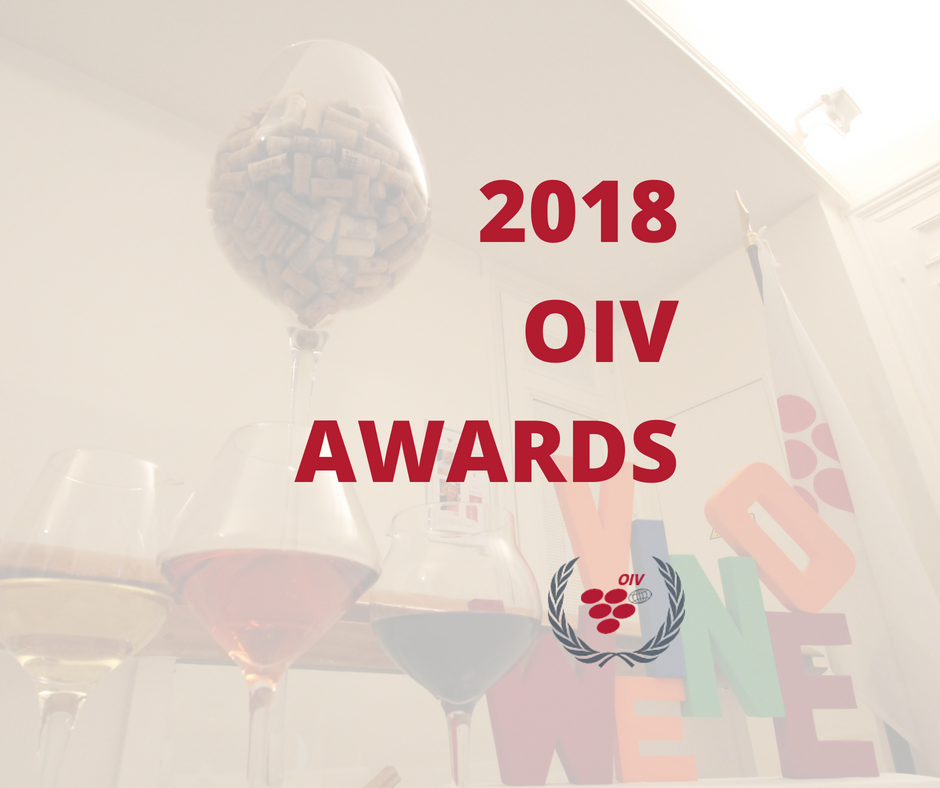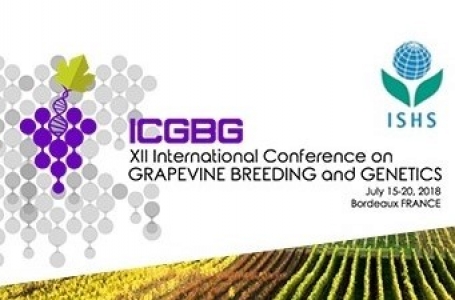24 окт 2018
Since Azerbaijan joined the OIV in 2013, the relationship between this country with an ancient viticulture tradition and the OIV has been strengthened at the highest level. As part of this, the Organisation's Director General received the Azerbaijan Minister for Agriculture, who headed a delegation of producers who had come to present their wines to the press and to professionals from the sector.Jean-Marie Aurand was delighted by the cooperation between Azerbaijan and the OIV. The Director General emphasised that the OIV was interested in expanding its cooperation with Azerbaijan and in technical and scientific exchanges with Azerbaijani experts at OIV meetings.“The development of the vitivinicultural sector is one of our primary objectives. The President of Azerbaijan Ilham Aliyev grants a particular importance to this field. A State programme for the development of viticulture has been implemented in Azerbaijan”, Mr Inam Karimov, the Azerbaijani Minister for Agriculture, announced during his conversation with the Director General of the OIV. The Director General of the OIV with Mr Inam KarimovMr Inam Karimov addressed the importance of reinforcing the close cooperation and communication with the OIV’s experts, the support for the development of the vitivinicultural sector, the participation of Azerbaijani students at different levels of education and of the grants offered by the OIV.On the occasion of the tasting, Mr Elchin Matadov, President of the Wine Producers and Exporters Association recalled the history of viticulture in his country and its current development, with 500 to 800 hectares planted annually.
22 окт 2018
Launched in 2008, the Wine in Moderation programme was an essential step for the vitiviniculture sector. For the first time, all relevant players in the European vitiviniculture sector came together to design a complete programme with the aim of promoting responsible, moderate wine consumption.The mission of WIM is to offer a common frame of reference which unites all actors in the international wine value chain and which encourages them to contribute to the fight against harm linked to excessive alcohol consumption.After 10 years of existence, the managers of WIM wished on the occasion of this celebration to put together an overview of completed initiatives and above all to reflect on the strategies which Wine in Moderation could undertake in the future. More than 50 participants from the professional sphere, scientists, and representatives from the vitiviniculture sector participated in these two days, marking the beginning of a deeper strategic, reflective and prospective project.The Director General of the OIV, Jean-Marie Aurand, accompanied by the Vice-President of the OIV Monika Christmann and the OIV’s Scientific Coordinator Jean-Claude Ruf, emphasized the importance of the role and the contributions of the Wine in Moderation-Art de Vivre programme in promoting social responsibility within the vitiviniculture sector and was also very pleased with what WIM has brought to the table through its participation as an OIV observer since 2015.
14 окт 2018
The 36th International IWLA Conference focused on the challenges of climate changeOrganised around this theme, the 36th International Wine Law Association (IWLA) Conference has brought together in Napa 150 legal professionals from around the world in order to gain understanding of the legal consequences of these issues.On 1-3 October 2018, the IWLA held its international conference in Napa (USA), covering the necessary development of wine law particularly in the face of the challenges of climate change. During the opening of the two sessions devoted to these issues, the OIV Director General took the opportunity to reiterate how this topic has become a priority among the strategic axes developed by the OIV. These axes are established in order to consider the environmental, societal and economic objectives of the industry, and form part of a holistic approach seeking to ensure the sustainability of the vitivinicultural sector.The communications and discussions surrounding this theme, which was chosen by the Californian hosts of the Conference, were very valuable. In particular, speeches from academics from Stanford and Berkeley and from professionals provided better understanding of initiatives implemented by companies in the sector with their societal and environmental responsibilities in mind, taking as examples the Champagne sector in France or E. & J. Gallo in California.Wine civilisation and its responsible consumption by Ernest GalloDuring this visit, Jean-Marie Aurand travelled to Modesto (USA) where he visited Gallo’s headquarters and imposing installations, and met with Ernest Gallo. It was an opportunity to commemorate the 25th anniversary of the declaration made by his grandfather Ernest Gallo during the OIV Assembly in San Francisco in 1993, which had the aim of promoting wine civilisation and its responsible consumption and enabled the founding of the “Wine and Health” Commission within the OIV thanks to USA support.With Ernest GalloThe implementation of analytical standards developed by the OIVThe OIV Director General was also able to see the importance and the implementation of analytical standards developed by the OIV during a visit to ETS Laboratories. ETS founder Gordon Burns presented the microbiological analysis unit, which allows for early detection of the risks of contamination by undesirable bacteria, yeasts or spores.Meeting with students in the sectorThis visit was also an opportunity to present, at CAL POLY (the California Polytechnic State University), the major economic trends and issues of the sector. During these exchanges with the students and the head of the Wine and Viticulture department, Dr Benoît Lecat, Jean-Marie Aurand spoke at length on the social and societal environment that influences the vitivinicultural sector and the need to ensure adequate training for those that will lead the sector in the years to come.Jean-Marie Aurand presents the major economic trends and issues of the sector.
11 окт 2018
This journey took place during the 7th International Wine Exposition of Helan Mountain’s East Foothill, on 12-15 September 2018.Regina Vanderlinde at the 7th International Wine Exposition of Helan Mountain’s East FoothillRegina Vanderlinde participated in the opening of the event, for which the theme was ‘Brand Taste Appreciation’, in the presence of local authorities and of Mr Cao Kailong, Director of the Ningxia Grape Industry Development Bureau. With Mr. Mr Cao KailongAs part of the event, an exposition of wines from different Chinese regions was also organised: the ‘Belt and Road’ at Yinchuan Exhibition Center. Additionally, this trip provided an opportunity for the President to visit several wineries in the region. During her visit to China, Regina Vanderlinde met with Mr Hao Linhai, former Vice Party Secretary of the People's Government of Ningxia and former President of the Ningxia association of winegrowers. Mr Hao Linhai was awarded the OIV Merit Award during the 40th World Congress of Vine and Wine in May 2017, in Sofia (Bulgaria).With Mr Hao LinhaiViticulture in the Ningxia region has seen a very robust expansion, boosted in particular by local authorities. Wine production is focused upon quality and diversity, with over 180 wineries. This dynamism follows the model of Chinese vitiviniculture as a whole, which has recorded significant development both in terms of table grape production (the top producing country) and the production and consumption of wine (globally the 8th biggest producer and 5th biggest consumer).
10 окт 2018
Boasting an age-old winemaking tradition, the country wishes to boost its vine and wine sector, particularly in the context of the strategic plan for agriculture, developed by President Nursultan Nazarbayev, that aims to position Kazakhstan as a global player in the field of organic production.As Jean-Marie Aurand pointed out, “After the accession of Azerbaijan, Armenia and Uzbekistan, the addition of Kazakhstan would complete the positioning of central Asia within the viticultural countries of the OIV, demonstrating the revitalization of these traditional wine- and grape-producing areas, as well as the emergence of market demand for quality products that meet international standards.”
23 сен 2018
Organised by the Lebanese Ministry of Agriculture on the theme of ‘new strategies and technologies for the Lebanese wine industry’, the event, held at the Holy Spirit University of Kaslik (USEK), brought together leading companies from the sector united under the Union Vinicole du Liban (Lebanon’s association of wine producers), as well as a number of industry experts.Speakers from different countries (e.g. France and Italy) offered insights into the latest technical, scientific and economic developments.The Director General of the OIV, along with his Assistant, took part in the day’s activities. On this occasion, Jean-Marie Aurand emphasised the ‘close and fruitful’ relationship enjoyed with Lebanon since the country became a member of the OIV in 1995.Vitivinicultural activity in Lebanon has experienced remarkable growth over the last 20 yearsAs early as 1997, the Union Vinicole du Liban was created on the advice of the OIV. In 2000, Lebanon passed a law relating to wine, on the basis of which the National Institute of Vine and Wine was created in 2013. Over the last six years, and under the dynamic leadership of Director General Louis Lahoud, the relationship between the OIV and Lebanon has grown even stronger.Mr Aurand also noted the success of the Lebanese Wine Day events, which were held in Paris in 2010 and 2013, in Berlin in 2014, in the United States in 2016 and 2017, and this year in Switzerland. Organised by the Lebanese Ministry of Agriculture, this year’s event attracted a large audience of specialists who, over the course of one day, had the opportunity to discover the diversity and quality of Lebanese wine production. He praised the involvement of the Director General of the Ministry of Agriculture, Mr Louis Lahoud, and the support of the Minister for Foreign Affairs, Mr Gebran Bassil. During his visit, the Director General of the OIV was received by the President of the Lebanese Republic, General Michel Aoun, and by Prime Minister Saad Hariri, who both assured him of their country’s support in the activities of the OIV. Jean-Marie Aurand with:1. The President of the Lebanese Republic, General Michel Aoun 2. The Prime Minister, Saad HarirDemonstrating the importance of the vitivinicultural sector in the country, high-level meetings were also held with the Minister of Economy, Mr Raed Khoury (1); the Minister for Justice, Mr Salim Jreissati (2); the Minister for Information, Mr Melhem Riachi (3); and the Minister for Tourism, Mr Avedis Guidanian (4).Jean-Marie Aurand with the Minister of Foreign Affairs, Mr Gebran BassilVitivinicultural activity in Lebanon has experienced remarkable growth over the last 20 years; today it has almost 50 wineries whereas 20 years ago it had eight. The country produces about 80,000 hL of wine a year and exports half of its production. It also promotes native vine varieties such as Obeidy or Merweh in an effort to rediscover the roots of this age-old winemaking tradition.
17 сен 2018
On 5 July in Paris, the international OIV Award Jury gave out 14 Awards and 10 Special Mentions among 51 competing works representing 19 countries: a very good 2018 vintage for the OIV Awards!On 18 September at the prestigious OIV Awards Ceremony – which was attended by numerous representatives from the Diplomatic Corps, the new OIV President Ms Regina Vanderlinde, OIV Director General Mr Jean-Marie Aurand, President of the OIV Award Jury Mr František Lipka, and Scientific Secretary of the Award Jury Mr Jean-Luc Berger – the 2018 winners were presented with their awards.Scientific and technical works, in addition to works intended for the general public, were honoured by the Jury. Read full press release
20 авг 2018
At the request of the scientific community of the OIV, the members of the OIV Award Jury, who met in Paris on 5 July 2018, decided unanimously to create a new Awards category: “Sustainable vitiviniculture”.This 11th category will take into account a topic that is a major concern for OIV experts. It responds to a growing number of works addressing sustainable development in the field of vitiviniculture – which is something the OIV Jury thus wishes to strongly encourage.For the next OIV Awards, which will be open for submissions from 1 September 2018 to 28 February 2019, works covering the 3 pillars of sustainable development (environment, society and economy) will be able to compete in this new category.*Submission forms available on the OIV website from 1 September 2018 hereContact: jurydesprix@oiv.int
08 авг 2018
2018 OIV AwardsViticulture Award / EX ÆQUOVinifera, l’Italia dei VitigniRiccardo Cotarella[IT]Edition "Assoenologi SOC COOP"&GUIDE PRATIQUE DE LA TAILLE GUYOT Prévenir les maladies du boisMarco Simonit, Massimo Giudici,Lorenzo Manfreda, Marco Ostan,Riccardo Turata, Alessandro Zanutta[FR]Edition "France Agricole GFA"Special MentionEl Potencial Aromático de las Variedades de Vid Cultivadas en GaliciaMar Vilanova De La Torre,José Maria Marques Oliveira,Ricardo Rivas Barros[ES]Edition "Xunta de Galicia"Viticulture and Enology AwardVines & VinificationSally Easton[EN]Edition "WSET Wine & Spirit Education Trust"2 Enology Award / EX ÆQUOVinařská TechnologieJosef Balík, Jan Stávek[Cz]Edition "Národní Vinařské Centrum, o.p.s."&Guides de bonnes pratiques d'hygiène - Filière vinsCoordinated by Aurélie Camponovo|FR]Edition "Editions des Journaux Officiels"Special MentionUnderstanding Wine ChemistryAndrew L. Waterhouse, Gavin L. Sacks,David W. Jeffery[EN]Edition "John Wiley & Sons Ltd"3 Economy Award1) Wine Globalization : A New Comparative HistoryKym Anderson, Vicente Pinilla[EN]Edition "Cambridge University Press"With2) Global Wine Markets, 1860 to 2016 : a statistical compendiumKym Anderson, Signe Nelgen, Vicente Pinilla[EN]Edition "University of Adelaide Press"Special mentionAnálisis de un sector : Rioja 4.0Emilio Barco Royo[ES]Edition "Consejería de Agricultura. Gobierno de La Rioja"4 Fine Arts, PaintingLE VIN DES PEINTRES - Une histoire hédoniste de l’art (XVe-XXe siècle)Jean Serroy[FR]Edition "Les Editions de La Martinière"4 Fine Arts, Adults' ComicsDans les coulisses du champagneScriptwriter: Maxe L'HermenierDrawer: Benoît Blary[FR]Edition "Les Editions Jungle"4 Literature, NovelSpecial MentionLe testament de VirgileIsabelle Chrétien[FR]Edition "Les Editions Féret"4 History and LiteratureSpecial Mention EX ÆQUOCHILEAN WINE An Illustrated HistoryEL VINO DE CHILE Una Historia IlustradaRodrigo Alvarado MooreAlejandro Hernández MuñozIllustrated byFabián Todorovic Karmelic[ES]|[EN] Edition "Origo"[ES]|[EN] Edition "Origo"&LES VINS DE BORDEAUX à l’épreuve de la Seconde Guerre mondiale 1938-1950Sébastien Durand[FR]Edition "Memoring Éditions"5 Wine and HealthL'ivresse du SoldatCharles Ridel[FR]Edition "Éditions Vendémiaire"6 Discovering and Presenting WinesGranddad Tell me about Grapevines!Pascale Bounet, Françoise Etourneaud[EN]Edition "Les Editions Féret"Special Mention EX ÆQUOAustralian Wine - Style and taste, people and placesDirected by Patrick Iland, with Peter Gago, Andrew Caillard, Peter Dry[EN]Edition "Patrick Iland Wine Promotions Pty Ltd"&Vous allez enfin vous y connaître en VinSébastien Durand-Viel and David Cobbold, authorsIllustrations of Bertrand Hoquet[FR]Edition "Larousse"7 Wines and TerritoriesWines of Japan - 日本 の ワ イ ンTeiji Takahashi, Kimie Harada, Kazuhiko Kobayashi,Hiroshi Saito[JP]+[EN]Edition "Ikaros Publications Ltd"8 Wines and GastronomyLes accords mets-vins. Un art françaisDirected by Jean-Robert Pitte[FR]Edition "CNRS Editions"9 Monographs and Specialised StudiesLe Val de Loire, Terres de CheninChristian Asselin, author coordinator of the collective of nearly 100 contributors[FR]Auto Edition Pascal Girault "Les caves se rebiffent »Special mention EX ÆQUOChampagne Vinet Och OdlarnaBritt Karlsson, Per Karlsson[SE]Edition "Carlsson Bokförlag"&Diversità dei vigneti della Svizzera italiana : stato attuale e prospettiveValeria Trivellone, Marco Moretti[IT]Edition "STSN Società Ticinese di Scienze Naturali et Museo Cantonale di Storia Naturale"10 Symposia proceedingsProceedings of the 16th Australian Wine Industry Technical ConferenceCoordinated by Kate Beames,Ella Robinson, Peter Dry, Dan Johnson[EN]Edition "The Australian Wine Industry Technical Conference Inc."
Winners of the 2018 OIV Awards presentation textes
25 июл 2018
This conference was an excellent opportunity to get an overview of the progress made in terms of reproduction strategies and in all scientific fields directly or indirectly related to grapevine selection. With over 70 speakers, 330 participants and 26 countries from 5 continents represented, GBG2018 – placed under the patronage of the OIV – has allowed for the coverage of a number of themes, for example: the maintenance and extension of genetic resources; the genetic, phenotypical and physiological characterisation of grapevine populations; as well as the functional characterisation of the genes involved in the control of berry development, maturation and composition, and in the adaptation to biotic and abiotic stress. Representing the OIV, the Head of the Viticulture Unit, Alejandro Fuentes Espinoza, met various experts in these fields and presented the role of the OIV and its work under way within the OIV “Genetic resources and vine selection” (GENET) Expert Group. The OIV, an organisation of a scientific and technical nature, has been working for some years now on the characterisation and evaluation of principles and of methods of production and sustainable selection for grapevine genetic resources. This is an important strategic axis in order to be able to provide appropriate responses to the vitivinicultural sector.All of the themes addressed during the Conference resulted in an important exchange of data and information that are at the heart of the viticultural issues of tomorrow in terms of sustainability.
